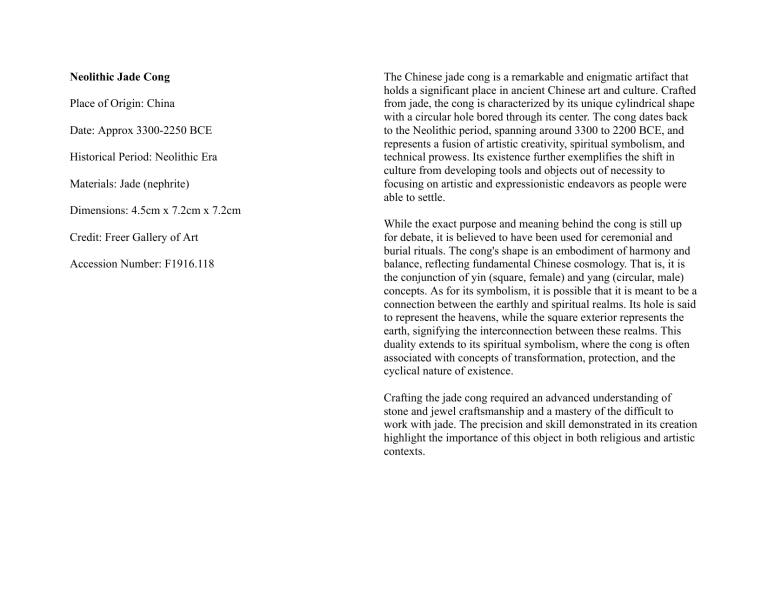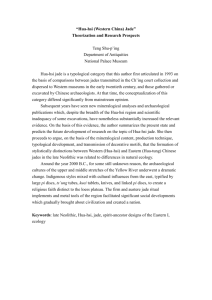
Neolithic Jade Cong Place of Origin: China Date: Approx 3300-2250 BCE Historical Period: Neolithic Era Materials: Jade (nephrite) The Chinese jade cong is a remarkable and enigmatic artifact that holds a significant place in ancient Chinese art and culture. Crafted from jade, the cong is characterized by its unique cylindrical shape with a circular hole bored through its center. The cong dates back to the Neolithic period, spanning around 3300 to 2200 BCE, and represents a fusion of artistic creativity, spiritual symbolism, and technical prowess. Its existence further exemplifies the shift in culture from developing tools and objects out of necessity to focusing on artistic and expressionistic endeavors as people were able to settle. Dimensions: 4.5cm x 7.2cm x 7.2cm Credit: Freer Gallery of Art Accession Number: F1916.118 While the exact purpose and meaning behind the cong is still up for debate, it is believed to have been used for ceremonial and burial rituals. The cong's shape is an embodiment of harmony and balance, reflecting fundamental Chinese cosmology. That is, it is the conjunction of yin (square, female) and yang (circular, male) concepts. As for its symbolism, it is possible that it is meant to be a connection between the earthly and spiritual realms. Its hole is said to represent the heavens, while the square exterior represents the earth, signifying the interconnection between these realms. This duality extends to its spiritual symbolism, where the cong is often associated with concepts of transformation, protection, and the cyclical nature of existence. Crafting the jade cong required an advanced understanding of stone and jewel craftsmanship and a mastery of the difficult to work with jade. The precision and skill demonstrated in its creation highlight the importance of this object in both religious and artistic contexts.



